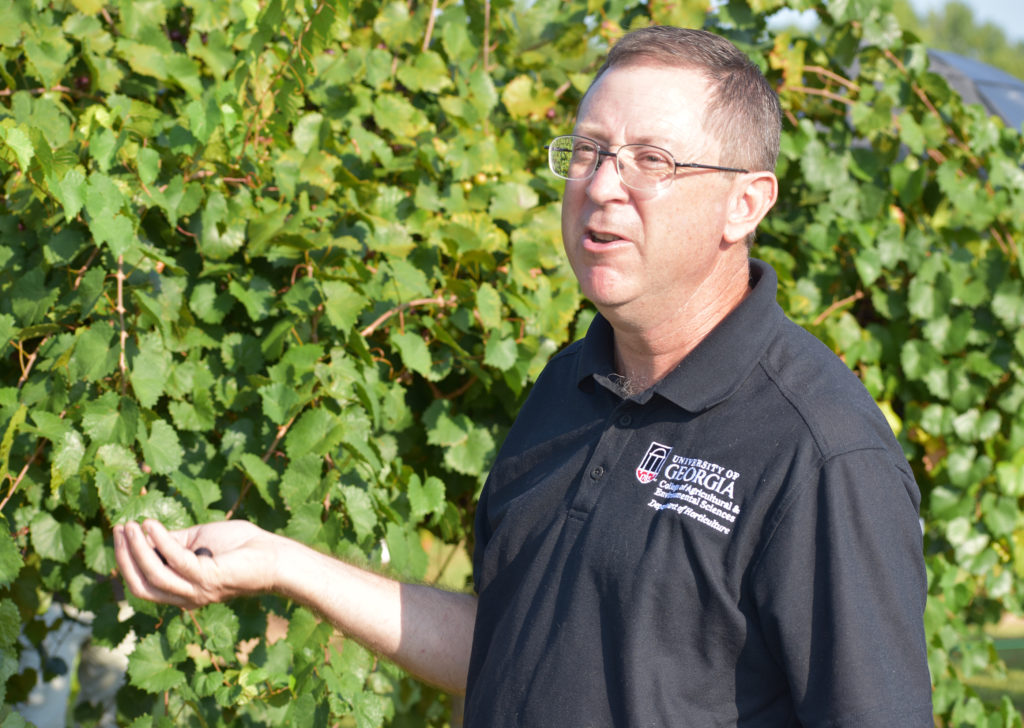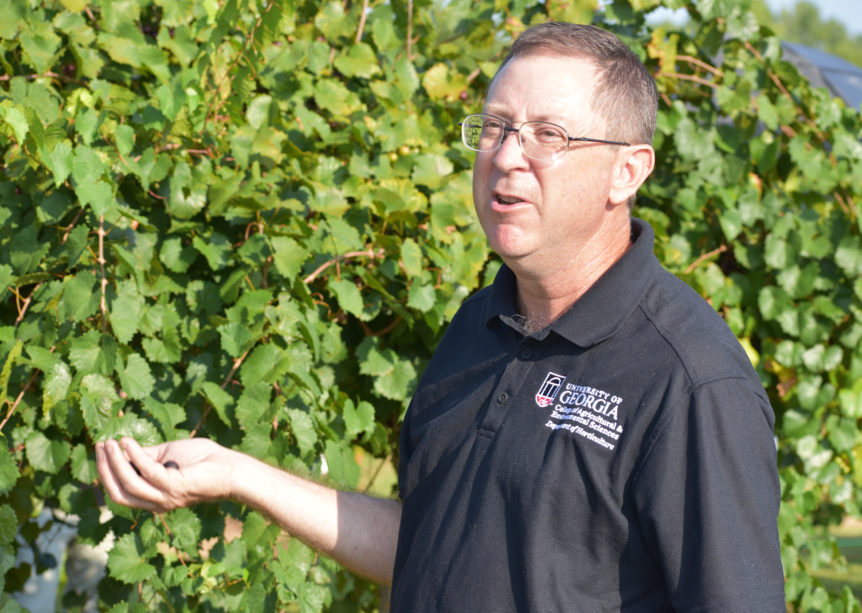By Clint Thompson
Muscadine research is essential to the industry’s long-term sustainability in Georgia.

University of Georgia (UGA) muscadine breeder Patrick Conner is using his research on the UGA Tifton Campus to help make the industry more viable and profitable. He talked about what is at the forefront of his research studies during a recent field day on the UGA Tifton Campus.
“Some are female vines that do not produce viable pollen. Some are self-fertile which produce both fruit and viable pollen. Growers just want the self-fertile varieties because they tend to yield more and they don’t have to worry about planting a pollinator for them,” Conner said. “The female vines typically have a bigger fruit and maybe a little bit better quality. We want the big fruit and good quality combined with the self-fertile flowers. That’s mainly what we’re looking for. We want early, mid and late-season varieties with the large fruit and self-fertile flowers.”
In Tifton, Georgia, the early season muscadine varieties usually are ready for harvest in the latter part of July. Mid-season muscadines are slated for the middle of August, and the late-season varieties are in the last part of August, first couple of weeks of September.
Conner is studying muscadine cultivars and researching characteristics like texture, weight, sweetness and color. All can influence a consumer’s decision in whether to purchase the fruit. Flavor is a trait that distinguishes muscadines from the average grape.










